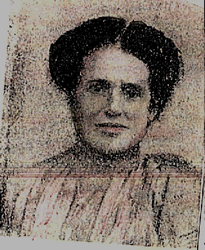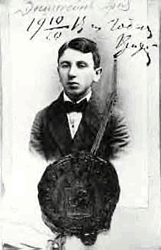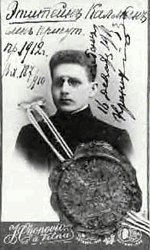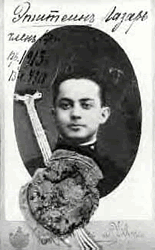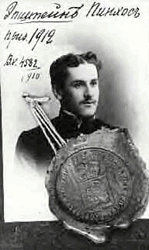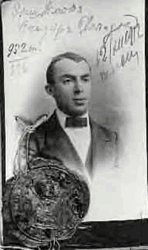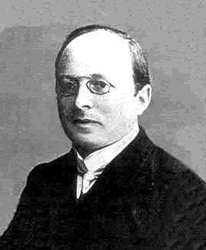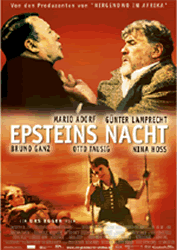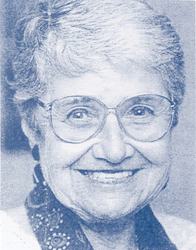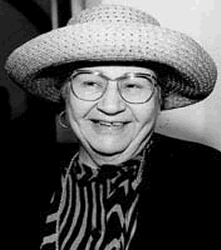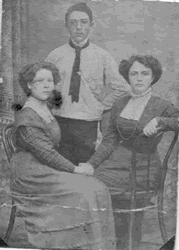Epstein Family
Click on Photos to Enlarge
#eps-1
#eps-2
#eps-3
#eps-4
#eps-5
#eps-6
#eps-7: Born:
24 July 1871 in Frankfurt, Germany Died: 11 Aug 1939 in Dornbusch, Germany
#eps-8
#eps-9: Hedy
Epstein is one of two voter-plaintiffs in Alliance for Democracy v. FEC,
NVRI’s recently filed federal lawsuit seeking FEC enforcement
against Ashcroft 2000 and the Spirit of America PAC for
serious campaign finance violations in the 2000 elections. Ms. Epstein is a Holocaust survivor and a
longtime human rights advocate.
She resides in St. Louis, Missouri. You can visit her website www.hedyepstein.com to read more about
her life and work. NVRI recently asked Ms. Epstein why she got involved in this case: go to;
http://www.nvri.org/updates/spring_2002/articles/hedy_epstein.htm
serious campaign finance violations in the 2000 elections. Ms. Epstein is a Holocaust survivor and a
longtime human rights advocate.
She resides in St. Louis, Missouri. You can visit her website www.hedyepstein.com to read more about
her life and work. NVRI recently asked Ms. Epstein why she got involved in this case: go to;
http://www.nvri.org/updates/spring_2002/articles/hedy_epstein.htm
#eps-10: Laura
Epstein
www.ssa.uchicago.edu/aboutssa/ history/tour1f.shtml
www.ssa.uchicago.edu/aboutssa/ history/tour1f.shtml
#eps-11: Samuel
William (Shimon Zev/Velvel) Epstein was born in Grodno Gubernia (Poland-Belarus),
approximately 1893, the son of Morris (Zalman Mashe) Epstein, who had
emigrated to London, England, when Sam was a boy.
http://fill4man.tripod.com/epstein
Morris's father was Avraham Eliezer, the son of Zev (Wolf)  Epstein - a LEVITE (from a Rabbinic Family) from ZHETL (Dyatlovo) in Belarus// ... Paul Epstein was brought up in a Jewish family in Frankfurt where his father was a professor at the Philanthropin Academy. After submitting a thesis on abelian
functions, he received his doctorate in 1895 from the University of Strasbourg. The city was German at this time (and called Strassburg) and it had been since it was annexed by Germany during the Franco-German War of 1870-71. From 1895 to 1918 he remained in Strasbourg, teaching at the Technical School and also at the University where he had been appointed a Privatdozent. During World War I he did military service. At the end of the war in 1918, however, the city of Strasbourg reverted to France, and Epstein, being German, was forced to leave Alsace. He returned to his native city of Frankfurt. Epstein was appointed to a non-tenured post at the university and he lectured in Frankfurt from 1919. Later he was appointed professor at Frankfurt. On 30 January 1933, however, Hitler came to power and on 7 April 1933 the Civil Service Law provided the means of removing Jewish teachers from the universities, and of
course also to remove those of Jewish descent from other roles. All civil servants who were not of Aryan descent (having one grandparent of the Jewish religion made someone non-Aryan) were to be retired. However, there was an exemption clause which exempted non-Aryans who had fought for Germany in World War I.
Epstein certainly qualified under this clause and this allowed him to keep his lecturing post in Frankfurt in 1933.
Decisions at the Nuremberg party congress in the autumn of 1935 made it clear that non-Aryans would no longer be able to keep their posts even if they had
served in World War I. Siegel writes in [2]:-
http://fill4man.tripod.com/epstein
Morris's father was Avraham Eliezer, the son of Zev (Wolf)  Epstein - a LEVITE (from a Rabbinic Family) from ZHETL (Dyatlovo) in Belarus// ... Paul Epstein was brought up in a Jewish family in Frankfurt where his father was a professor at the Philanthropin Academy. After submitting a thesis on abelian
functions, he received his doctorate in 1895 from the University of Strasbourg. The city was German at this time (and called Strassburg) and it had been since it was annexed by Germany during the Franco-German War of 1870-71. From 1895 to 1918 he remained in Strasbourg, teaching at the Technical School and also at the University where he had been appointed a Privatdozent. During World War I he did military service. At the end of the war in 1918, however, the city of Strasbourg reverted to France, and Epstein, being German, was forced to leave Alsace. He returned to his native city of Frankfurt. Epstein was appointed to a non-tenured post at the university and he lectured in Frankfurt from 1919. Later he was appointed professor at Frankfurt. On 30 January 1933, however, Hitler came to power and on 7 April 1933 the Civil Service Law provided the means of removing Jewish teachers from the universities, and of
course also to remove those of Jewish descent from other roles. All civil servants who were not of Aryan descent (having one grandparent of the Jewish religion made someone non-Aryan) were to be retired. However, there was an exemption clause which exempted non-Aryans who had fought for Germany in World War I.
Epstein certainly qualified under this clause and this allowed him to keep his lecturing post in Frankfurt in 1933.
Decisions at the Nuremberg party congress in the autumn of 1935 made it clear that non-Aryans would no longer be able to keep their posts even if they had
served in World War I. Siegel writes in [2]:-
Epstein voluntarily relinquished
his teaching position before the Nuremberg laws went into effect. As
he explained to me, he had wanted to save the German authorities the
trouble of doing to him what the French had done back in 1918. Epstein
did not attempt to emigrate. He was 64 years old and had he emigrated
he would have lost all his money except 10 Marks. There was no prospect
of a 64 year old obtaining a post. On the Kristallnacht (so called because
of the broken glass in the streets on the following morning), the 9-10
November 1938, 91 Jews were murdered, hundreds were seriously injured,
and thousands were subjected to horrifying experiences. Thousands of
Jewish businesses were burnt down together with over 150 synagogues.
The Gestapo arrested 30,000 well-off Jews and a condition of their release
was that they emigrate. The Gestapo broke into Epstein's house but found
that he was seriously ill and could not be moved. At this point Epstein
must have known that his only chance was to leave Germany. It would
have been posssible for [2]:-
... one of his sisters had emigrated earlier and could have supported
him. But despite the possibility of escape, he hesitated leaving his
books and his native
city. He moved to Dornbusch and was visited there by Siegel [2]:-
... we sat in the sunny garden of the house he was living in then. ...
he pointed to the trees and flowers in the garden and said "Isn't
it lovely here". About a week after Siegel's visit, Epstein received
a summons from the Gestapo. He knew what had happened to others who
had received such a summons, many had been tortured and killed. He wanted
to avoid the suffering so he took a lethal dose of Veronal. The Gestapo
later claimed that they had only summoned him to get him to sign a document
to fix a date on which he would emigrate. His work was in number theory,
in particular the zeta function. He also worked on the history of mathematics.
Perhaps we should mention one other of Epstein's talents which was music,
and he took part energetically in the cultural life of Frankfurt.
Article by: J J O'Connor and E F Robertson Joseph Epstein was born and
educated in Chicago, where, since 1974, he has been a lecturer in English
and writing at Northwestern University. From 1975 to 1997 he was the
editor of The American Scholar. Three of the essays in this volume were
chosen for The Anchor Essay Annual and The Best American Essays, where
his work has frequently appeared. "The modern essay," as Karl
Shapiro has written, "has regained a good deal of its literary
status in our time, much to the credit of Joseph Epstein Connecting
With Patients A Q&A with Dr. Fred Epstein Every medical school which
Fred Epstein applied to rejected him. He was extremely intelligent,
but his academic performance had been sabotaged by learning disabilities
that were undiagnosed in 1950s.
    Despite being written
off as lazy and dumb, Epstein was determined to become a doctor. A friend
of the family helped him get into medical school, and he
graduated from New York Medical College in 1963. He decided to become
a neurosurgeon and helped create the field of pediatric neurosurgery.
    His pioneering
work in figuring out how to operate on tumors in the brain stem and
spinal cord — surgery previously considered too dangerous
to
perform — helped Epstein become world famous in the
medical profession.
    But his success
today is twofold. His skills as a neurosurgeon are legendary and have
been for nearly four decades. Now he’s focusing on
creating
what he calls “a healing environmentâ€*
not only for patients but for their families and the doctors and staff
who treat them.
His dream has been realized at New York’s Beth Israel
Medical Center North, where Epstein is the director of the Institute
for Neurology and Neurosurgery.
    Epstein has helped
create a treatment center where trauma to young patients is minimized
with the help of regular visits from Adam the Clown and
“therapyâ€* dogs. The playroom is open
all day and there is a rooftop playground for youngsters.
    Parents can accompany
their children into the operating room and stay until they are asleep.
There is no recovery room. Children wake up with their
parents by their bedsides. If children need to stay in the intensive
care unit, their parents can spend the night with them.
    Doctors are encouraged
to channel competitiveness into productive learning environments with
fellow physicians and nurses. The goal is to create
treatment teams, instead of the rigid hierarchy that exists in many
other hospitals.
    Esptein’s
vision was to create a facility at Beth Israel North where state-of-the-art
technology could exist within an environment of compassion and
humanity.
    ABCNEWS’
Nightline profiles Epstein’s work in “The
Messengerâ€* broadcast
Q&A with Dr. Epstein
My sister died in 1970 at the age of 10 from a tumor of her brain stem.
No one would attempt the surgery at that time. What prompted you to
step in and begin doing this type of surgery? — Mary
Anna Wolf of Allen Park, Mich.
Dr. Fred Epstein: First of all let me be very clear that the great majority
of brain stem tumors are not operable. Unfortunately with these tumors,
the outlook is the same today as it was 25 years ago. The only treatment
is radiation therapy, sometime supplemented with chemotherapy, and most
of the children pass away within 18 months of diagnosis. What I discovered
some years ago that while the majority of brain tumors could not be
treated with surgery about 25 percent of them were in fact noncancerous
and operable. These tumors may be identified by their location in the
brain stem, and their appearance on the MRI scan. They occur in two
areas of the brain stem, the medulla (which is the lowest part of the
brain stem) and the midbrain (which is the highest part of the brainstem).
Tumors in these regions may often be largely removed with surgery and
treated only in that way. In other circumstances the surgery may be
supplemented with chemotherapy or radiation therapy. My experience has
been that 80 or 90 percent of these patients survive indefinitely after
this treatment.Hopefully in the coming years we will develop effective
treatments for the brain stem tumors that occur in the pons, which is
the most common location of brain stem tumors, and at the present time
the most difficult to treat.In the broadcast, you mentioned that the
Dalai Lama had asked you to scientifically evaluate whether Eastern
medicine works. I’m wondering if you’ve
begun that project yet and what the conclusions are. I hope that the
results of any such study would be published widely.
— Ellen Seger of Mesa, Ariz.
Dr. Epstein: There is no question in my mind that mind that many of
the meditation techniques utilized in the Tibetan culture have important
applicability to stress reduction programs in our facility. It is extraordinarily
difficult to evaluate this “scientifically,â€*
while we endeavor to do that in the future we are still developing different
facets of the program in a clinical setting. In other words, during
our first phase the techniques were utilized for stress reduction amongst
our nursing staff who were becoming emotionally drained as a result
of the clinically complex problems that we deal with and they were faced
with. In the next phase we intend to make this program available to
both parents and children in an effort to reduce the terror associated
with surgery, blood tests, etc. I am hoping that ultimately we will
develop a scientifically accepted method of assessing the results. Perhaps
we will discover that utilizing these techniques reduces the time of
hospital stay, perhaps it will become obvious in other ways. The most
important aspect of this program in the overall sense is that we recognize
that we must not think so much as health providers but healing ones.What
causes a 12-year-old child to develop a nonmalignant brain tumor? What
are the chances that the same child will develop another tumor that
will or won’t be malignant? — Stephanie
Boeke of Austin, Texas
Dr. Epstein: We do not know the cause of brain tumors. There is very
exciting research that is being directed toward understanding this and
hopefully within the next few years it will come to fruition. It is
very unlikely that child with a benign brain tumor will develop a second
tumor within the brain or body. Please describe your public school experience.
When did things get difficult due to the undiagnosed learning disability?
Were there any strategies that you developed to compensate for your
disabilities?
— Daphne Pereles of Littleton, Colo.
Dr. Epstein: When I was in my early years (first through fifth grade)
learning disabilities were an unknown entity. Those of us that had these
problems were simply viewed as unintelligent, and from my perspective
the greatest sadness was that we viewed ourselves the same way. Retrospectively
I recognize that I had difficulties from the first grade on. I still
remember in the third grade standing at the blackboard and being used
as an example of how not to write. I will never forget the humiliation
and subsequent depression that was associated with this. I remember
in the second grade the class was expected to perform addition or work
with relatively complex numbers. This was an impossibility for me and
I was viewed as a student with a very questionable future. Later on
in school it was recognized that I had impaired skills in reading, this
made it very difficult for me to keep up with my classmates even in
the most basic subjects, such as history and English. Teacher comments
on my report cards were always the same, I should work harder, and my
problem was laziness. Over the years I adjusted to my problems by developing
a work ethic that was a very simple one: I would put in many more hours
studying than my friends would to accomplish the same end. I will never
forget how my friends were all very surprised that anyone could work
as hard as I did for such mediocre results.The end result of this, however,
was that I was always willing to work hard, and to pursue my ideas irrespective
of how impossible it may have seemed at the time to fulfill my ambitions.
I only recognized that I had a learning disability when my 12-year-old
daughter was having difficulties in school and underwent detailed testing.
I will always remember our meeting with the psychologist that carried
out the tests and how she described Ilana’s problems.
She explained to both my wife and I that she was an extremely intelligent
girl, but she had very specific problems in well-defined areas which
were considered to be “learning disabilities.â€*
It was only when she described these problems in detail that I first
recognized that this is what I had as a young child. What is so interesting
to me know is that I experienced something quite similar to something
that other children have described when being informed of their learning
disability. That was a sense of relief until I recognized that this
was the basis of my old problem I must always have felt somewhere inside
of my soul, that I was not as smart as my colleagues. All of a sudden
I not only understood what was going to help my daughter, but also,
that it had helped me.I turned on Nightline a little late and found
you talking about a patient who had touched your life. You asked the
question, “Who holds the patient’s
hand?â€* Nurses hold the patient’s hand.
This is how we connect with our patients.
We also comfort the grieving family. Please hold a hand if a patient
looks you in the eye and asks for support, but know that the nurse is
there for the patient also. — Marian Soat, RN, BSN,
CCRN of Cleveland, Ohio
Dr. Epstein: There is no question that nurses bear an enormous burden
in caring for patients with complex and life threatening problems. I
am convinced that the empathy that is communicated between nurse to
patient is one of the essential ingredients to the healing process.
I also believe that nurses have been much more sensitive than physicians
in understanding the health system and a healing environment. Your story
and commitment to life moved me deeply and really I have only one question:
How can I help? Do you need volunteers? — Petra Dorfsman
of Yorktown Heights, N.Y.Dr. Epstein: I greatly appreciate the fact
that many have offered to volunteer after viewing the Nightline program.
However, we are currently fully staffed with volunteers for both our
pediatric in-house playroom and out-patient chemotherapy playroom. Many
hospitals have pediatric programs in desperate need of volunteers. I
would be deeply honored if you on the basis of having watched the Nightline
program find a new and fulfilling direction in your own life that may
translated into helping children who are ill from whatever cause.Following
“The Messengerâ€* broadcast, Dr.Epstein
received more than 1,000 e-mails via ABCNEWS.com and the Beth Israel
Medical Center Web site. Dr. Epstein can be contacted via e-mail at
doctore@bethisraelny.org.
http://216.239.39.100/custom?q=cache:-iw-zDwsVqkC:abcnews.go.com/sections/nightline/Nightline/nl010104_Epstein_mailform.html+Epstein+&hl=en&ie=UTF-8
Richard Epstein received a B.A. in philosophy summa cum laude from Columbia
in 1964. He received a B.A. in law with first class honors from Oxford
University in 1966, and an LL.B., cum laude, from the Yale Law School
in 1968. Upon his graduation he joined the faculty at the University
of Southern California, where he taught until 1972. In 1972, he visited
the University of Chicago, and became a regular member of the faculty
the next year. He was named James Parker Hall Professor in 1982 and
Distinguished Service Professor in 1988.Mr. Epstein has written extensively
in many legal areas. His books include: Principles for a Free Society:
Reconciling Individual Liberty with the Common Good (1998); Mortal Peril:
Our Inalienable Right to Health Care? (1997), Simple Rules for a Complex
World (1995), Bargaining with the State (1993), Forbidden Grounds: The
Case Against Employment Discrimination Laws (1992), and Takings: Private
Property and the Power of Eminent Domain (1985). Mr. Epstein is also
the editor of Cases and Materials in the Law of Torts (7th ed.) and
has written a one-volume treatise, Torts (1999). He has also written
many scholarly articles on a broad range of common law, constitutional,
economic, historical, and philosophical subjects.
Among the subjects that he has taught are contracts, property, torts,
and criminal law in the first year curriculum, and conflicts of law,
health law, workers' compensation, real estate development and finance,
and political theory in the upper years. He spent the 1977-78 year as
a Fellow at the Center for Advanced Studies in the Behavioral Sciences
at Stanford. From 1981 to 1991 he was editor of the Journal of Legal
Studies. Since 1991, he has been an editor of the Journal of Law &
Economics. He was elected a Fellow of the American Academy of Arts and
Sciences in 1985. He served as Interim Dean of the Law School from February
to June of 2001. Born: 1943.
Education: A.B., 1964, Columbia College; B.A., 1966, Oxford University;
LL.B., 1968, Yale University.
Brian Epstein is the man who discovered the Beatles, and guided them
to mega-stardom, making them the most successful musical artists of
all time. Without Brian, the Beatles as we came to know them, simply
wouldn't have existed. But, regrettably, the man who did so much for
the Beatles - and who died tragically in 1967 - has become a comparatively
forgotten man since his death. Almost a Nowhere Man.
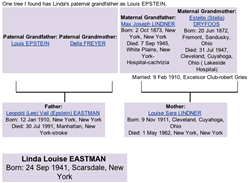
#eps-12:
I just found out that Linda Eastman McCartney's father's surname was
originally EPSTEIN. I found some trees with more information through the
FTJP and some biographical info on wikipedia, which states that Linda's dad
was of Russian Jewish extraction.
One tree I found has Linda's paternal grandfather as Louis EPSTEIN,
Paternal Grandfather:
Louis EPSTEIN
Paternal Grandmother:
Della FREYER
Maternal Grandfather:
Max Joseph LINDNER
Born: 2 Oct 1873, New York, New York
Died: 7 Sep 1945, White Plains, New York- Hospital-cachrizia
Maternal Grandmother:
Estelle (Stella) DRYFOOS
Born: 20 Jun 1872, Fremont, Sandusky, Ohio
Died: 31 Jul 1947, Cleveland, Cuyahoga, Ohio ( Lakeside Hospital)
Married: 9 Feb 1910, Excelsior Club-robert Gries
Father:
Leopold (Lee) Vail (Epstein) EASTMAN
Born: 12 Jan 1910, New York, New York
Died: 30 Jul 1991, Manhattan, New York-stroke
Mother:
Louise Sara LINDNER
Born: 9 Nov 1911, Cleveland, Cuyahoga, Ohio
Died: 1 May 1962, New York, New York
Linda Louise EASTMAN
Born: 24 Sep 1941, Scarsdale, New York
--
McCartney was born Linda Louise Eastman, the second-eldest of four children, to Jewish-American parents in New York City. She had one brother, John (July 10, 1939) and two sisters, Laura (b. 1947) and Louise Jr. (b. 1950).[2][3] She grew up in the wealthy Scarsdale area of Westchester County, New York and graduated from Scarsdale High School in 1960.[4] Her father, Lee Eastman, was the son of Jewish-Russian immigrants. He changed his name from Leopold Vail Epstein to Lee Eastman, but was not related to the Eastman Kodak family.[3][5] He was songwriter Jack Lawrence's attorney, and at his request, Lawrence wrote a song called, "Linda", in honour of the five-year-old, which was recorded by Buddy Clark in 1947.[3] Her mother was Louise Sara Lindner Eastman—heiress to the Lindner Department Store fortune—who died in the crash of American Airlines Flight 1 in Queens, New York, in 1962.[6][7] McCartney later said that because of her mother's death, she hated travelling in airplanes.[8] McCartney studied for a Fine Art major at the University of Arizona.[4] Her first marriage was to John Melvin See Jr., whom she met at university. They married on June 18, 1962, and their daughter Heather Louise was born on 31 December 1962. They were divorced in June 1965. McCartney later commented that See was a "nice man, a geologist, an Ernest Hemingway type".[8]
McCartney started work as a receptionist for the Town & Country magazine, and was the only unofficial photographer on board the SS Sea Panther yacht on the Hudson River who was allowed to take photographs of The Rolling Stones during a record promotion party.[5][9][10] Although she had previously only studied the photography of horses in Arizona at an arts centre with a teacher, Hazel Archer, she was asked to be the house photographer at the Fillmore East concert hall.[11] Groupies who frequented the Fillmore and Max's Kansas City nightclub later called her, "Linda Starfucker".[12] She photographed artists such as Aretha Franklin, Jimi Hendrix, Bob Dylan, Janis Joplin, Eric Clapton, Simon and Garfunkel, The Who, and The Doors.[13][14] She photographed Clapton for Rolling Stone magazine, becoming the first woman to have a photo featured on the front cover (May 11, 1968). McCartney and her husband also appeared on the cover of Rolling Stone on January 31, 1974, making her the only person both to have taken a photo for and to have been photographed for the magazine cover.[5] Her photographs were later exhibited in more than 50 galleries internationally, as well as at the Victoria and Albert Museum in London.[5] A collection of photographs from that time, Linda McCartney's Sixties: Portrait of an Era, was published in 1993.[13][15]
[ 15 May 1967, the then Linda Eastman met Paul McCartney at a Georgie Fame concert at the Bag O'Nails club in London.[16] She was in the UK on an assignment to take photographs of "Swinging Sixties" musicians in London. The two later went to the Speakeasy club on Margaret Street to see Procol Harum.[7][17] They met again four days later at the launch party for Sgt. Pepper's Lonely Hearts Club Band at Brian Epstein's house in Belgravia. When Eastman's assignment was completed, she flew back to New York City.[18] In May 1968, they met again in New York, as John Lennon and Paul McCartney were there to announce the formation of Apple Corps.[19] In September of the same year, McCartney phoned her and asked her to fly over to London. They were married six months later at a small civil ceremony (when she was four months pregnant with their daughter Mary) at Marylebone Registry Office on 12 March 1969.[20][21] She said after the birth of James that four children was enough.[8] She became Lady McCartney when her husband was knighted in 1997.[5] Her brother, entertainment lawyer John Eastman, has represented Paul McCartney since the break-up of The Beatles.[22]
Music
Main article: Wings (band)
Paul and Linda McCartney at the 1974 Academy Awards.
Linda made an uncredited vocal contribution to the Beatles' title song of Let It Be in January 1969.[23] After the breakup of the Beatles in 1970, McCartney taught her to play keyboards, and permanently included her in the lineup for his new group Wings.[24] The group garnered several Grammy Awards, becoming one of the most successful bands of the 1970s, but had to endure jibes like, "What do you call a cow with wings? Linda McCartney".[12] She later admitted that the early accusations about her singing out of tune in the early days with Wings were true.[8]
In 1977, a single entitled "Seaside Woman" was released by an obscure band called Suzy and the Red Stripes, on Epic Records in the U.S.[23] In reality, Suzy and the Red Stripes were Wings with Linda McCartney (who also wrote the song) on lead vocals.[25] The song was recorded by Wings in 1972, in response to a lawsuit by ATV (which owned Northern Songs) over Paul McCartney's practice of granting his wife co-writing credit on his songs, which had the effect of transferring a share of the publishing royalties to MPL Communications from ATV. The lawsuit was settled out of court.[23]
McCartney and her husband shared an Oscar nomination for the song "Live and Let Die", which they co-wrote.[5] Linda McCartney's album Wide Prairie, which included "Seaside Woman", was released posthumously in 1998.[26] Paul McCartney worked with the help of the Beatles' engineer, Geoff Emerick, to finish the album.[27] Along with eight other British composers, he contributed to the choral album A Garland for Linda, and dedicated his classical album, Ecce Cor Meum, to his late wife.[28] In January 1999, "The Light Comes From Within" single from the Wide Prairie album was banned by TV and radio stations in the UK. Paul McCartney placed advertisements in English national newspapers asking parents to give "guidance" as to whether their children could be "morally corrupted" by the song lyrics, which included the lines, "You say I'm simple, you say I'm a hick, You're fucking no-one, you stupid dick".[29]
Vegetarianism, activism and lifestyle
McCartney introduced her husband to vegetarianism in 1975, and promoted a vegetarian diet through her cookbooks: Linda McCartney's Home Cooking (1989) Linda's Kitchen and Simple and Inspiring Recipes for Meatless Meals. She explained her change to vegetarianism by saying that she did not "eat anything with a face", and if "slaughterhouses had glass walls the whole world would be vegetarian".[2][8] In 1991, she introduced a line of frozen vegetarian meals under the Linda McCartney Foods name, which made her wealthy independently of her husband.[30] In 1995, McCartney appeared in animated form with her husband in The Simpsons episode "Lisa the Vegetarian". The "Trash of the Titans" episode was dedicated to her memory. The H. J. Heinz Company acquired Linda McCartney Foods in March 2000, and the Hain Celestial Group bought it in 2007.[7][31]
McCartney was a strong advocate for animal rights, and lent her support to many organizations like PETA (People For The Ethical Treatment of Animals) as well as The Council For The Protection of Rural England, Friends Of The Earth, and was a patron of the League Against Cruel Sports.[7] Before her death, she narrated a TV advertisement for PETA, in which she said: "Have you ever seen a fish gasping for breath when you take it out of the water? They're saying, 'Thanks a lot for killing me. It feels great, you know.' No! It hurts!"[32] After her death, PETA created the Linda McCartney Memorial Award.[31]
McCartney was arrested in Los Angeles for possession of marijuana in 1975, although all charges were later dropped.[33] In 1984, the McCartneys were arrested in Barbados for possession of marijuana and were fined $100 each. They flew to Heathrow Airport, London, where Linda McCartney was arrested again on charges of possession. She later commented that hard drugs were disgusting, but marijuana "is pretty lightweight".[8][34][35]
[ Death
A photo of Linda McCartney shortly before her death.
McCartney was diagnosed with breast cancer in 1995, and her condition soon grew worse as it spread to her liver.[5][36] Paul's last words to her were: "You're up on your beautiful Appaloosa stallion. It's a fine spring day. We're riding through the woods. The bluebells are all out, and the sky is clear-blue".[31] Linda McCartney died at age 56 on April 17, 1998, at the McCartney family ranch in Tucson, Arizona.[5] She was cremated in Tucson, and her ashes were scattered at McCartney's farm in Sussex.[37] Paul later suggested that fans remember her by donating to breast cancer research charities that do not support animal testing, "or the best tribute — go veggie".[5] Memorial services were held for her at St. Martin-in-the-Fields in London, which was attended by George Harrison, David Gilmour and Ringo Starr. A memorial service was also held at Riverside Church in Manhattan, two months after her death.[31]
Talking later about the medication used to treat her breast cancer, Paul said: "If a drug has got to be used on humans then legally it has to be finally tested on an animal ... This was difficult for Linda when she was undergoing her treatment."[38] He also claimed that she was unsure if the drugs she took had been tested on animals: "During the treatment, a nice answer is a nice answer and if they (the doctors) say, `It's OK to have this because we didn't test it on animals', you are going to believe them."[38] She left her entire fortune to her husband in a special trust, known as a Qualified Domestic Trust, which allows deferral of estate taxes due on her assets until after his death.[1][39] He will have access to any royalties from books, records and any financial remuneration for the use of his wife's photographs.[40] He has pledged to continue her line of vegetarian food, and to keep it free from genetically modified organisms.[41]
Wide Prairie, a six-minute cartoon fantasy film by Linda McCartney and director Oscar Grillo, was premièred at the Edinburgh International Film Festival on 19 August 1998. It was shown before the British première of The Horse Whisperer, starring Robert Redford.[42][43] On April 10, 1999, Paul McCartney performed at the tribute "Concert for Linda" in the Royal Albert Hall, with numerous artists including George Michael, the Pretenders, Elvis Costello and Tom Jones.[44] In January 2000, he announced donations in excess of $2,000,000 for cancer research at the Memorial Sloan-Kettering Cancer Center in New York and the Arizona Cancer Center in Tucson, where Linda received treatment. The centers received $1 million (£625,000) each. The donations, through the Garland Appeal, were made on the condition no animals would be used for testing purposes.[31][45] In 2000, The Linda McCartney Centre, a cancer clinic, opened at The Royal Liverpool University Hospital.[31] In November 2002, the Linda McCartney Kintyre Memorial Trust opened a memorial garden in Campbeltown — the main town on the Mull of Kintyre — with the dedication of a bronze statue of Linda by sculptor Jane Robbins, commissioned and donated by Paul.[31][46]
Portrayals on screen
Elizabeth Mitchell and Gary Bakewell played Linda and Paul McCartney in the 2000 TV movie The Linda McCartney Story.[47]. Catherine Strauss had earlier played her (as "Linda Eastman") in the 1985 TV movie John and Yoko: A Love Story.[48] Tamara Blum Cohen appeared as Linda McCartney in a 2007 episode of the TV series Final 24 focused on Keith Moon.[49]
Notes
^ a b Gruber, Stephen C.. "Qualified Domestic Trust (QDT) Living Trusts for Non-Citizens". Stephen C. Gruber, Attorney at Law. Retrieved on 2008-01-28.
^ a b "Obituary: Linda McCartney". BBC (1998-04-19). Retrieved on 2008-01-28.
^ a b c "When I Was A Pup". Geocities. Retrieved on 2008-01-28.
^ a b "Linda McCartney". The Virtual Museum of San Francisco. Retrieved on 2008-01-26.
^ a b c d e f g h i Skanse, Richard (1998-04-20). "Linda McCartney Dies at 56". Rolling Stone. Retrieved on 2008-01-26.
^ "Accident description". Aviation Safety Network (1996). Retrieved on 2008-01-28.
^ a b c d Slater, Nigel (2007-04-29). "When the McCartneys came for lunch". The Guardian. Retrieved on 2008-01-28.
^ a b c d e f McCartney, Linda. "Linda McCartney Quotes". Brainy Media. Retrieved on 2008-01-28.
^ McCartney, Linda. "The Rolling Stones aboard SS Panther on the Hudson, 1966". The Estate of Linda McCartney. Retrieved on 2008-01-28.
^ Fields, Danny. "Linda McCartney "The Biography" Chapter 1". Wingspan Russia. Retrieved on 2008-01-28.
^ Fields, Danny. "Linda McCartney "The Biography" Chapter 2". Wingspan Russia. Retrieved on 2008-02-01.
^ a b Greer, Germaine (2006-05-21). "Germaine Greer: Pop bitch". The Independent. Retrieved on 2008-01-28.
^ a b "Light From Within". Archer & Valerie Productions/MPL Communications, Ltd. (2001). Retrieved on 2008-01-28.
^ McCartney, Linda. "Aretha Franklin - black and white photograph". The Estate of Linda McCartney. Retrieved on 2008-01-28.
^ "Linda McCartney's Sixties: Portrait of an Era". Amazon. Retrieved on 2008-01-28.
^ Newman, Raymond. "The Beatles' London, 1965-66". Abracadabra. Retrieved on 2008-01-28.
^ "48 Margaret Street, London". The Deep Purple Appreciation Society. Retrieved on 2008-01-28.
^ Miles 1998. p117.
^ Spitz 2005. p761.
^ "1969: Paul McCartney weds Linda Eastman". BBC. Retrieved on 2008-01-28.
^ "Sequel: All Together Now. Thirty years later, the surviving Beatles get back to where they once belonged" (in English), People (February 14, 1994). Retrieved on 2006-11-10.
^ Barnes, Brigham T (2004-09-30). "Entertainment lawyer John Eastman (64) discussed "doing something different,"". New York School of Law. Retrieved on 2008-01-28.
^ a b c Gambaccini, Paul (1974-01-31). "The Rolling Stone Interview: Paul McCartney". Retrieved on 2008-01-28.
^ Bonici, Ray (1982). "Paul McCartney Wings it alone". Music Express" (Canada) issue #56 (GG70470). Retrieved on 2008-01-28.
^ Calkin, Graham. "Seaside Woman b/w B-Side To Seaside". Graham Calkin's Beatles Pages. Retrieved on 2008-01-28.
^ "Linda's lone effort to be released". BBC (1998-09-03). Retrieved on 2008-01-28.
^ "Wide Prairie". 2000 Archer & Valerie Productions (2007). Retrieved on 2008-01-28.
^ "A Garland for Linda". BBC (1999-05-17). Retrieved on 2008-01-28.
^ "Linda's last song 'banned'". BBC (1999-01-25). Retrieved on 2008-01-28.
^ "About Linda". The Hain Celestial Group, Inc (2007). Retrieved on 2008-01-28.
^ a b c d e f g "Linda McCartney Remembered". Archer & Valerie Productions (1998-2008). Retrieved on 2008-01-28.
^ "PETA's Fish Empathy Ad Hits the Airwaves". Fishing Hurts. Retrieved on 2008-01-28.
^ Wasserman, Harry (1980-07-06). "Paul's Pot-Bust Shocker Makes Him A Jailhouse Rocker". High Times. Retrieved on 2008-01-28.
^ "Arrested: Paul McCartney". Time Magazine (1984-01-30). Retrieved on 2008-01-28.
^ "Paul McCartney On Drugs". 10 Zen Monkeys. Retrieved on 2008-01-28.
^ Saffian, Sarah (December 17, 2001). "Untimely deaths haunt extended Beatles family", US Magazine Company, p. 37. Retrieved on 2006-11-10.
^ "Linda McCartney suicide claims dismissed". BBC (1998-04-23). Retrieved on 2008-01-28.
^ a b "Paul's dilemma over animal testing". BBC (1998-10-23). Retrieved on 2008-01-28.
^ "Linda leaves fortune to Paul". BBC (2000-03-14). Retrieved on 2008-01-28.
^ "The Will of Linda McCartney". 2007 Courtroom Television Network LLC (1996-07-04). Retrieved on 2008-01-28.
^ "Sir Paul's GM foods pledge". BBC (1999-06-10). Retrieved on 2008-01-28.
^ "Linda McCartney's last film set for premiere". BBC (1998-08-16). Retrieved on 2008-01-28.
^ "Linda's last film premières to packed house". BBC (1998-08-20). Retrieved on 2008-01-30.
^ "Paul McCartney leads Linda tribute". BBC (1999-04-11). Retrieved on 2008-01-28.
^ "Sir Paul's $2m cancer donation". BBC (2000-01-05). Retrieved on 2008-01-28.
^ "Scots tribute to Linda McCartney". BBC (2002-11-01). Retrieved on 2008-01-28.
^ http://www.imdb.com/title/tt0240683/ IMDb entry for The Linda McCartney Story
^ http://www.imdb.com/title/tt0089380/ IMDb entry for John and Yoko: A Love Story
^ http://www.imdb.com/title/tt1151590/ IMDb entry for Final 24 episode "Keith Moon"
References
Fields, Danny (2001). Linda McCartney. Time Warner (Paperbacks). ISBN 0-7515-2985-0.
McCartney, Paul. "Sir Paul McCartney on Linda". The Times, April 6, 2008.
Miles, Barry (1998). Many Years From Now. Vintage-Random House. ISBN 0-7493-8658-4.
Spitz, Bob (2005). The Beatles: The Biography. Little, Brown and Company (New York). ISBN 1845131606.
External links
The Path of the Vegetarian by Linda McCartney
Linda McCartney quotes
Danny Fields' biography
NAME McCartney, Linda
ALTERNATIVE NAMES Eastman, Linda
SHORT DESCRIPTION American photographer
DATE OF BIRTH September 24, 1941
PLACE OF BIRTH Scarsdale, New York
DATE OF DEATH April 17, 1998
PLACE OF DEATH Tucson, Arizona
Retrieved from "http://en.wikipedia.org/wiki/Linda_McCartney"
#eps-13:
BRIAN EPSTEIN
Early life
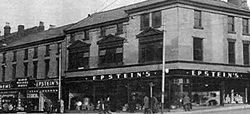
The Epstein family's shops in Walton Road, Liverpool.
Epstein was born into a Jewish family in Rodney Street, Liverpool, England. Epstein's grandfather, Isaac Epstein, was from Hodan, Lithuania (which was part of Russia at that time) and arrived in England in the 1890s, at the age of eighteen.[1] His grandmother, Dinah, was the daughter of Joseph and Esther Hyman, who emigirated (from either Poland or Russia) to England (circa 1870) with their eldest son, Jacob. The Hymans had six more children http://en.wikipedia.org/wiki/Brian_Epstein.
Isaac Epstein married Dinah Hyman in Manchester, in 1900.[2] In 1901, Isaac and Dinah were living at 80 Walton Road, Liverpool, with Isaac's sister, Rachael Epstein, above the furniture dealership he had recently founded.[3] Dinah and Isaac's third son was Harry Epstein; the father of Brian Epstein.[4] After Harry and his brother Leslie had joined the family firm, Isaac Epstein founded "I. Epstein and Sons", and enlarged his furniture business by taking over adjacent shops (62/72 Walton Road) to sell a varied range of other goods, such as musical instruments and household appliances.[4][5] They called the expanding business NEMS (North End Music Stores) which offered lenient credit terms, and from which McCartney's father once bought a piano.[6][7][8]
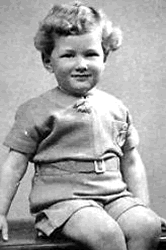
Brian Epstein at four years of age.
Epstein's mother was formally named Malka (although always known by her family as Queenie—Malka translating as "queen" in Hebrew) and was a member of the Hyman furniture family, which owned the successful Sheffield Veneering Company.[4] Harry and Queenie also had another son, Clive, who was born 22 months after Epstein's birth.[9] During WWII the Epsteins moved to Southport to escape The Blitz—where two schools expelled Epstein for laziness and poor performance—but returned to Liverpool in 1945.[10] The Epsteins lived at 197 Queens Drive, Childwall, in Liverpool, and stayed there for 30 years.[11] After his parents had moved him from one boarding school to another, the 14-year-old Epstein spent two years at Wrekin College, in Shropshire. Shortly before his sixteenth birthday in 1950, he sent a long letter to his father, explaining that he wanted to become a dress designer, but Harry Epstein was adamantly opposed to this idea, and his son finally had to "report for duty" at the family's furniture shop.[1][9] On a £5 per week wage, selling furniture was not what Epstein wanted, but he was congratulated by his family on the first day of work after selling a £12 dining room table to a woman who originally wanted to buy a mirror.[12]
In December 1951, Epstein was drafted—as a clerk—into the Royal Army Service Corps, and was posted to the Albany Street Barracks near Regent's Park, in London, where he was often reprimanded for not picking up his army pay.[13] After returning to Liverpool Epstein was put in charge of Clarendon Furnishing shop in Hoylake, and in 1955, at the age of twenty-one, was made a director of NEMS.[9] In September of 1956, he took a trip to London to meet a friend, but after being there for only one day, he was robbed of his passport, birth certificate, chequebook, wristwatch, and all the money he had on him. As he did not want his parents to find out, he worked as department store clerk until he had earned enough money to buy a train ticket back to Liverpool.[14] Back in Liverpool, he confessed "everything" (his homosexuality) to a psychiatrist—a friend of the Epstein family—who suggested to Harry Epstein that his son should leave Liverpool as soon as possible. During the sessions Epstein revealed his ambition of becoming an actor, so his parents allowed him go to London to study.[14][9] Epstein attended the Royal Academy of Dramatic Art (RADA) in London. His RADA classmates included actors Susannah York, Albert Finney and Peter O'Toole, but Epstein dropped out after the third term.[15] Back in Liverpool, Harry Epstein put his son in charge of the record department of the newly-opened NEMS music store on Great Charlotte Street.[16] Epstein worked "day and night" at the store to make it a success, and it became one of the biggest musical retail outlets in the North of England.[17] The Epsteins opened a second store at 12-14 Whitechapel, and Epstein was put in charge of the entire operation. Epstein often walked across the road to the Lewis's department store (which also had a music section) where Peter Brown was employed. He watched Brown's sales technique and was impressed enough to lure Brown to work for NEMS with the offer of a higher salary and a commission on sales.[18] On 3 August 1961, Epstein started a regular music column in the Mersey Beat magazine, called, 'Record Releases, by Brian Epstein of NEMS'.[10]
[] The Beatles
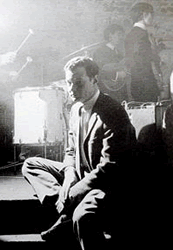
Epstein at the Cavern Club (photo by David Steen)
The Beatles' name was supposedly first noticed by Epstein in issues of Mersey Beat, and on numerous posters around Liverpool, before asking Bill Harry who they were, as Harry had previously convinced Epstein to sell the Mersey Beat magazine at NEMS).[19] (The Beatles were featured on the front page of Mersey Beat's second issue).[20][21] The Beatles had recorded the 'My Bonnie' single with Tony Sheridan in Germany, and some months after its release Epstein asked Alistair Taylor about it in NEMS.[22] Epstein's version of the story was that a customer, Raymond Jones, walked into the NEMS shop and asked Epstein for the "My Bonnie" single, which made Epstein curious about the group.[23]
The Beatles were due to perform a lunchtime concert in the Cavern Club (a dark, damp, and dirty basement) on 9 November 1961, not far from the NEMS store.[15] Epstein asked Bill Harry to arrange for Epstein and his assistant Taylor to watch The Beatles perform, and Epstein and Taylor were allowed into the club without queuing, with a welcome message being announced over the club's public-address system by Bob Wooler, who was the resident DJ.[24] Epstein later talked about the performance:
" I was immediately struck by their music, their beat, and their sense of humour on stage—and, even afterwards, when I met them, I was struck again by their personal charm. And it was there that, really, it all started.[25] "
After the performance, Epstein and Taylor went into the dressing room—which was "as big as a broom cupboard"—to talk to them.[26] The Beatles immediately recognised Epstein—as they were regular customers at NEMS—but before Epstein could congratulate them on their performance, George Harrison said, "And what brings Mr. Epstein here?"[27]
The Beatles played at the Cavern over the next three weeks, and Epstein was always there to watch them. Epstein contacted their previous manager, Allan Williams, to confirm that Williams no longer had any ties to them, but Williams advised Epstein "not to touch them with a barge pole".[28][29] In a meeting with the group at NEMS on 10 December 1961, he proposed the idea of managing them.[30] The Beatles signed a five-year contract with Epstein on 24 January 1962.[21] Epstein had told his mother and father that managing The Beatles was only a part-time occupation, and would never interfere with the family business.[31]
Although Epstein had had no prior experience of artist management, he had a strong influence on their early dress-code and attitude on stage.[32] When Epstein discovered the band, they wore blue jeans and leather jackets, performing at rowdy rock 'n' roll shows where they would stop and start songs when they felt like it, or when an audience member requested a certain song. Epstein encouraged them to wear suits and ties, insisted that they stop swearing, smoking, drinking or eating onstage, and also suggested the famous synchronised bow at the end of their performances.[33] McCartney was the first to agree with Epstein's ideas, believing it was—in part—due to Epstein's RADA training.[34] Lennon was against the idea of suits and ties, but later said, "Yeah, man, all right, I'll wear a suit. I'll wear a bloody balloon if somebody's going to pay me".[35]
Epstein made numerous trips to London to visit record companies with the hope of securing a record contract, but was rejected by many, including Columbia, Pye, Philips, Oriole, and most famously, Decca [see The Decca audition].[36] The Beatles later found out that Epstein had paid Decca producer Tony Meehan (ex-drummer of the Shadows) to produce the studio recordings.[36] While Epstein was negotiating with Decca, he also approached EMI marketing executive Ron White, who later contacted EMI producers Norrie Paramor, Walter Ridley, and Norman Newell, but they all declined to record the group.[37][38] White could not contact EMI's fourth staff producer (Martin) as he was on holiday.[39]
On 8 February 1962, Epstein visited a HMV store in Oxford Street, London, to have the Decca audition tape transferred to disc. A HMV technician named Jim Foy liked the recordings, and suggested that Epstein should contact Parlophone's George Martin.[40] The Beatles were signed by EMI's small Parlophone label after the group had been rejected by almost every other British record company, and without Martin ever having seen them play live.[41] Martin later explained that Epstein's enthusiasm and conviction that one day The Beatles would become internationally famous convinced him to sign them.[32]
Martin scheduled an audition—at Abbey Road Studios—which convinced Martin that they were good enough, but with one exception: He felt the recording would be better served by an experienced session drummer in place of Pete Best.[41] When the news came that Martin wanted to replace Best on their recordings with a session drummer, John Lennon, McCartney and Harrison asked Epstein to fire Best from the band.[32] Epstein agonised about the decision, and asked Bob Wooler if it was a good idea, to which Wooler replied that Best was very popular with the fans and they wouldn't like it at all.[42] Ringo Starr took his place, as Starr had previously played with Rory Storm and the Hurricanes, and had previously stepped in to drum with them when Best was ill or unable to play.[41]
The Beatles toured the Philippines in July 1966, but Epstein unintentionally snubbed the nation's first lady, Imelda Marcos, when presented with an invitation to a breakfast party.[43] Epstein politely declined on behalf of the group, as it had been their policy never to accept such official invitations.[44] The Beatles and their entourage were ejected from their hotel the same day and were given a police escort to the airport. They boarded the plane to fly home, but Epstein and Mal Evans were ordered off, with both believing they would not be allowed back on the plane.[45] Epstein was forced to give back most of the money that they had earned in the Philippines before being allowed back on the plane.[46]
After Candlestick Park
The Beatles' hectic schedule of touring, television, and film work between 1963-65 kept Epstein very busy. The Beatles' last live concert was at Candlestick Park in San Francisco, California on 29 August 1966, and Epstein's management duties changed to reflect the changing nature of their career. He wanted them to continue touring, however, but they adamantly refused.[47] The Beatles started to pay less attention to Epstein's advice on many issues after they stopped touring, such as the legally risky cover art of Sgt. Pepper's Lonely Hearts Club Band. Epstein later brought Robert Stigwood into the NEMS organisation, and wanted to sell the control of NEMS to him, but didn't tell any of the group about his decision.[48]
Before Epstein's death, McCartney had been taking a much more active interest in NEMS' finances, and the group was becoming aware that some artists with more ruthless managers—such as the Rolling Stones under Allen Klein—claimed to be receiving more commercially advantageous terms. After Epstein's death, Stigwood wanted to take over the management of NEMS—believing that he was the "natural successor"—but Lennon, McCartney, Harrison and Starr all vehemently opposed him, with Lennon saying, "We don't know you. Why would we do this?"[48]
[] Business dealings
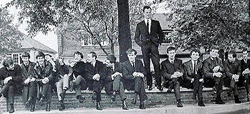
Epstein (standing) with some of his NEMS artists. (Lennon, Starr, Harrison and McCartney are on the far left).
McCartney admitted that they signed all the contracts Epstein presented to them without reading them first, but when Lennon was asked for a comment about Epstein's business dealings after Epstein's death, he said, "Well, he was alright. I've found out since, of course, that he wasn't quite as honest to us as he made out"—although many other interviews with Lennon report him as being very loyal to Epstein, and even saying, "We had complete faith in him when he was running us. To us, he was the expert".[49][50]
The Beatles all signed Epstein's first management contract, but Epstein did not sign it himself, thereby giving himself the option of withdrawing at any time, although he told his Taylor the opposite by saying, "Well, if they ever want to tear it up, they can hold me but I can't hold them".[32] The contract was not legally binding on McCartney and Harrison in any case, as they were both still minors (the age of majority at that time was 21) and lacked the legal capacity to sign a binding contract. The contract stated that Epstein would receive a management commission of 25 percent of their gross income after a certain threshold had been reached.[21][51] The Beatles argued for a smaller percentage, but Epstein pointed out that he had been paying their expenses for months, without receiving anything in return.[52] Epstein once offered the individual Beatles a fixed wage of £50-a-week for life, instead of receiving money from record sales. Harrison commented that he was earning £25 a week at the time, which was more than the £10 a week his father was earning, but the group as a whole declined Epstein's offer, as they thought that they were worth much more than £50-a-week.[53] After the release of Love Me Do in 1962, Epstein signed a second (and legally binding) contract.[54][5]
The Beatles' recording contract that EMI offered Epstein gave them one penny for each record sold, which was split amongst the four members, meaning one farthing per group member. The royalty rate was further reduced for singles sold outside the UK, on which the group received half of one penny (again split between the whole band) per single.[55] Martin said later that EMI had "nothing to lose" by signing a contract with them.[56]
The Beatles' concerts were booked by Epstein himself, and he also presented groups managed by NEMS as an opening act, thereby making money for NEMS as the promoter, booking agent, and Manager for all the concerts.[57] The Beatles were constantly in demand by concert promoters, and Epstein took advantage of the situation to avoid paying some taxes by accepting "hidden" fees on the night of a performance, which he always kept in a brown paper bag.[58] Epstein also successfully managed Gerry & the Pacemakers, Billy J. Kramer and the Dakotas (who had three hits with Lennon-McCartney songs) the Fourmost (their first two singles were written by Lennon) the Cyrkle (Epstein's first American group) and Cilla Black (who was Epstein's only female artist) as well as other artists.
During the first Beatles' flight to America Epstein was offered numerous samples of products by merchandisers—who required a licence from Epstein to be allowed to sell them—including clocks, pens, plastic wigs, bracelets, and games, but Epstein rejected all of them. David Jacobs, the lawyer for NEMS, had already given away some exclusive merchandising rights to Nicky Byrne in England, which later turned out to be a financial mistake as Epstein had asked for a percentage that was far below the norm at the time.[59] The Beatles were ensconced in the Plaza hotel in New York, and Epstein was further besieged by calls and visits from merchandisers, promoters, television commentators, and hustlers—all demanding to talk to him.[60] Mindful of the number of records the group were selling in America, Capitol records sent a well-spoken Yorkshire girl, Wendy Hanson, to the Plaza hotel to act as Epstein's secretary, and to filter his calls.[61] Hanson later worked solely with Epstein in his Albemarle Street office, which was separate from the NEMS office.[62]
Epstein asked James Trevor Isherwood (a Chartered Accountant) to set up a company to collect Lennon and McCartney's PRS payments—called Lenmac—which he did on 12 May 1964. When he first visited Epstein's office, Isherwood was surprised to learn that Epstein took 25% of the gross income, and not what he thought was the usual 10% that other managers received at that time.[63] All of Epstein's expenses were also deducted from any of his artists gross income, which meant office rental, staff wages, travel, telephone costs, and entertaining expenses.[64] Before his death, Epstein knew that the renegotiation of his management contract (up for renewal on 30 September 1967) would reduce his management fee from 25 per cent to 10 per cent, and would also mean a larger drop in NEMS income, as Beatles' concert fees had been taken out of the equation.[65]
The Beatles entered into a publishing agreement with Dick James Music (DJM) who set up a company called Northern Songs. Epstein agreed that James should receive 25 per cent of the shares, and Charles Silver—his financial partner and accountant—should also receive 25 per cent. Lennon and McCartney received 20 per cent each, and Epstein held the remaining 10 per cent.[66] The Beatles PRS income increased rapidly, and Epstein asked Isherwood to work out a way of avoiding the tax that Lennon and McCartney would have to pay. Isherwood suggested a Stock-market flotation for Northern Songs, and further advised Epstein that Lennon and McCartney should move to houses near his [Isherwood's] in Esher during the flotation, which Lennon, Harrison, and Starr did—with only Epstein and McCartney remaining in London.[67]
After moving to London Epstein rented an office in Monmouth Street—close to Seven Dials—in 1965, and later leased the Saville Theatre on Shaftesbury Avenue.[68] He promoted new works by writers such as Arnold Wesker in productions that occasionally fell afoul of the Lord Chamberlain by including "obscene" content or nudity. Epstein changed the programme to that of a music venue in 1966, presenting various U.S. acts.[69] Epstein was asked to appear on several music-based TV programmes in Britain after the success of The Beatles, and also hosted a regular part of the US TV show Hullabaloo, by filming his appearances in the UK.[32]
[] Personal life
Throughout Epstein's life he was known to be kind and caring to his family, friends of his family, and business colleagues. When Lennon married Cynthia Powell, on 23 August 1962, Epstein attended the wedding as the "best man" and paid for their celebration lunch afterwards.[70][71] During Cynthia's pregnancy Epstein paid for a private room in a hospital and offered the Lennons the sole use of his flat on Faulkner Street when they needed somewhere to live. He also agreed to be the godfather to Julian Lennon, John and Cynthia's son.[72][73]
[] n
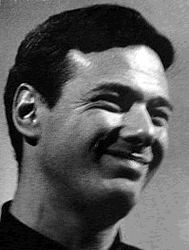
A Dezo Hoffmann photo of Epstein.
Epstein's strongest relationship with a woman was with singer Alma Cogan, who was also Jewish and a part of the old-fashioned world of show business. Epstein always bought her presents when he was abroad, and even took her to Liverpool to meet his parents. Despite Epstein's preference for male company, some of his friends believed they would eventually get married.[82] Cogan died of ovarian cancer on 26 October 1966 at age 34.[83]
In October 1964, Epstein's autobiography, A Cellarful of Noise, was published in the UK and later in the U.S. It was co-written by journalist Derek Taylor, who had served as Epstein's assistant that year, then later as the publicist for NEMS from 1968-1970.[32] (Lennon reportedly once quipped that the memoir should have been titled A Cellarful of Boys). Male homosexual relations were illegal throughout the UK until September 1967 (only one month after Epstein's death) when gay male sexuality was legalised in England and Wales (remaining illegal in Scotland and Northern Ireland until 1980 and 1982, respectively).[84]
[
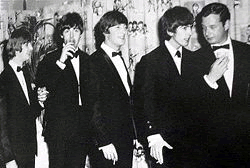
Starr, McCartney, Lennon, Harrison and Epstein at the preview of A Hard Day's Night in 1964.
[] Death

The Daily Mirror Headline: "EPSTEIN (The Beatle-making Prince of Pop) DIES AT 32".
A few weeks before his own death, Epstein attended a traditional shiva in Liverpool after his father passed away, having just come out of the Priory clinic where he had been trying to cure his acute insomnia and his addiction to amphetamines.[95] Epstein's last visit to a Beatles' recording session was on 23 August 1967, at the Chappell Recording Studios on Maddox street, London.[96]
On Thursday 24 August, Epstein asked Brown and Geoffrey Ellis down to Kingsley Hall (44.5 miles from his home in Chapel Street) which was Epstein's country home in Uckfield, Sussex, for the Bank Holiday weekend. After they got there, Epstein decided to drive back to London by himself because an expected group of rent boys he had invited failed to arrive.[65] Epstein phoned Brown the next day at 5 o'clock in the afternoon from his Chapel Street house in London. Brown thought that Epstein sounded "very groggy", and suggested that Epstein take a train back down to Kingsley Hall instead of driving under the influence of Tuinals. Epstein replied that he would eat something, read his mail and watch Juke Box Jury before phoning Brown to tell him which train to meet. He never called again.[65]
Epstein died of a drug overdose on 27 August 1967. The Beatles were in Bangor at the time, having a meeting with the Indian guru Maharishi Mahesh Yogi, and Epstein had previously agreed to travel to Bangor after the August Bank Holiday.[97][98] A concert by Jimi Hendrix at the Saville Theatre (which Epstein leased) was cancelled out of respect on the same day that Epstein died.[97] At the statutory inquest, his death was officially ruled accidental, and was probably caused by a gradual buildup of Carbitral in his system, mixed with alcohol. It was revealed that he had taken six Carbitral pills in order to sleep, which was probably usual for Epstein, but meant that his tolerance was very close to becoming lethal.[65]
Peter Brown claimed in his memoir, The Love You Make: An Insider's Story of The Beatles, that he had once found a suicide note written by Epstein and spoke with him directly about it. According to Brown, the note read in part, "This is all too much and I can't take it anymore." A short will and testament followed, in which Epstein left his house and money to his mother and his brother (Brown himself was a small beneficiary). When confronted with the note, Epstein told Brown that he was grateful Brown had not told anyone about it, and told him that he was sorry he had made Brown worry. He explained that he had simply had taken one pill too many and that he did not intend to overdose and promised to be more careful from then on. Brown later wrote that he wondered if he was really doing Epstein a favour by not showing the note to Epstein's doctor, Norman Cowan, who would have stopped prescribing drugs for Epstein.[99]
The Beatles did not attend Epstein's funeral, wishing to give his family privacy by not attracting the media and fans.[35]
[edit] Legacy
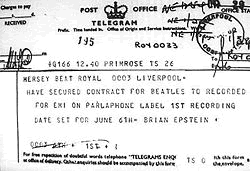
The telegram that Epstein sent to Mersey Beat magazine to announce that he had secured The Beatles their first recording contract.
Epstein was overlooked when Lennon, McCartney, Harrison and Starr were honoured with the MBE in 1965 (Harrison once said that the MBE stood for "Mister Brian Epstein"). The Beatles were among the earliest entrants into the Rock and Roll Hall of Fame, but Epstein is not in the Hall's "Non-Performer's Section". Martin Lewis—previously Taylor's assistant—created "The Official Brian Epstein Website", which includes a petition that Epstein be inducted into the Rock and Roll Hall of Fame.[25] Lewis also organized the 1998 re-publication (in the U.S.) of Epstein's 1964 autobiography, A Cellarful of Noise. McCartney summarised the importance of Epstein when he was interviewed, in 1997, for a BBC documentary about Epstein by stating: "If anyone was the Fifth Beatle, it was Brian."[100] In his 1970 Rolling Stone interview, John Lennon commented that Epstein's death marked the beginning of the end for the group: "I knew that we were in trouble then ... I thought, We've fuckin' had it now".[101][102] 30 years after Epstein's death, McCartney said, "Brian would really be happy to hear how much we loved him."[35]
[edit] Notes
1. ^ a b Spitz 2005 pp258-259
2. ^ 1881 census (England)
3. ^ 1901 census (England)
4. ^ a b c Spitz 2005. p255
5. ^ a b "Actual Contract". Beatle Money. Retrieved on 2008-04-18.
6. ^ Spitz 2005. p71
7. ^ Miles 1997 pp23-24.
8. ^ Brown, Peter (2002) p63
9. ^ a b c d e "The Life of Brian". Springtime!. Retrieved on 2008-04-18.
10. ^ a b Spitz 2005. p257
11. ^ The Rough Guide to the Beatles google.com/books - Retrieved 22 October 2007
12. ^ "Brian Epstein NEMS". Beatle money. Retrieved on 2008-04-19.
13. ^ Spitz 2005. p259
14. ^ a b Spitz 2005. p261
15. ^ a b c Frankel, Glenn (2007-08-26). "Nowhere Man". The Washington Post. Retrieved on 2008-04-19.
16. ^ Spitz 2005. p263
17. ^ Spitz 2005. p264
18. ^ Brown, Peter. 2002. p63
19. ^ Miles 1997 p84
20. ^ Spitz 2005. pp264-265
21. ^ a b c d Miles 1997 p88
22. ^ Spitz 2005. p265
23. ^ Miles 1997 pp84-85
24. ^ Spitz 2005. pp266-268
25. ^ a b Brian Epstein web page brianepstein.com. Retrieved: 15 March 2007
26. ^ "The Beatles Anthology" DVD 2003 (Episode 1 - 0:57:59) Epstein talking about his first meeting with The Beatles.
27. ^ Spitz 2005. p268
28. ^ Miles 1997 p75
29. ^ Frankel, Glenn (2007-08-26). "Nowhere Man (p3)". The Washington Post. Retrieved on 2008-04-19.
30. ^ Miles 1997 p85
31. ^ "The Life of Brian (p2)". Springtime!. Retrieved on 2008-04-19.
32. ^ a b c d e f "The Life of Brian (p3)". Springtime!. Retrieved on 2008-04-19.
33. ^ Spitz 2005. pp279-280
34. ^ Miles 1997 p96
35. ^ a b c d e Frankel, Glenn (2007-08-26). "Nowhere Man (p4)". The Washington Post. Retrieved on 2008-04-19.
36. ^ a b Miles 1997 p89
37. ^ Coleman 1989 p88–89
38. ^ Coleman 1989 p93
39. ^ Coleman 1989 p93–94
40. ^ Beatles' History - 1962 geocities.com. Retrieved: 9 March 2007
41. ^ a b c Miles 1997 p90
42. ^ Spitz 2005. p329
43. ^ Spitz 2005. p619
44. ^ Spitz 2005. p620
45. ^ Spitz 2005. p624
46. ^ Spitz 2005. p625
47. ^ Spitz 2005. p666
48. ^ a b Spitz 2005. p725-726
49. ^ Miles 1997 p146
50. ^ McCabe/Schonfeld "For The Record" 1984. p90
51. ^ Miles 1997 pp144-145
52. ^ Cynthia Lennon – "John" 2006. p103
53. ^ bbc.co.uk: Epstein 'wanted Beatles fortune' news.bbc.co.uk. Retrieved: 9 March 2007
54. ^ Lewisohn "Chronicles" 2006. p61.
55. ^ Brown, Peter. 2002. p79
56. ^ George Martin and money beatlemoney.com. Retrieved: 11 March 2007
57. ^ Brown, Peter 2002. p102
58. ^ Brown, Peter. 2002. p110
59. ^ Spitz 2005. pp465-466
60. ^ Spitz 2005. pp458-464
61. ^ Spitz 2005. p464
62. ^ Spitz 2005. p667
63. ^ Miles 1997 p144
64. ^ Miles 1997 p145
65. ^ a b c d Miles 1997 p405
66. ^ Miles 1997 p147
67. ^ Miles 1997 pp166-167
68. ^ Saville Theatre history at Arthur Lloyd accessed 28 Aug 2008
69. ^ Spitz 2005. pp648-649
70. ^ Spitz 2005. p348
71. ^ Brown, Peter. 2002. p83
72. ^ Brown, Peter. 2002. p93
73. ^ Cynthia Lennon – "John" 2006. p171
74. ^ Miles 1997 p88
75. ^ Miles 1997 p86.
76. ^ Spitz 2005. p260
77. ^ a b Frankel, Glenn (2007-08-26). "Nowhere Man (p2)". The Washington Post. Retrieved on 2008-04-19.
78. ^ Spitz 2005. p262
79. ^ Spitz 2005. pp302-303
80. ^ Cynthia Lennon – "John" 2006. p104
81. ^ Dowling, William J. (1989) Beatlesongs. New York: Simon & Schuster Inc. ISBN 0-671-68229-6
82. ^ Miles 19
http://en.wikipedia.org/wiki/Brian_Epstein
--
Looking for relatives of WILENSKI or WILENSKY ( changed to WILSON in the U.S) originating in
Kaziany;
;
I am seeking any further information on Moses EPSTEIN (born ca 1875), my
great great uncle. I had not known about him until searching through a 1904
Hudson, NY directory. In 1904 he was living at the same address as my gg
parents who had, themselves, settled in Hudson about 1898. Moses EPSTEIN was
my ggm Hoda EPSTEIN WILSONs (1865-1930) brother. After locating him in
the directory, I also found him on an Ellis Island manifest (Albano
22 Dec 1903) showing that he was going to Hudson to be with his brother-in
-law Saul WILSON. After 1904, the WILSONs (except for my grandfather, Joe
who appears in the 1906 directory boarding with another family) were no
longer in Hudson. They moved to NYC and appear in the 1910 Census in Manhatten
and in the 1920 and 1930 censuses in the Bronx. Moses also does not appear
in any subsequent Hudson directory. However, I have not been able to find
him in any other records.
The WILSONs arrived in the United States from Kasan (Kozyany, Belarus) and
changed their name from WILENSKI or WILENSKY. Saul and Hoda had four children:
Nina, Joseph, Benjamin, and Esther. Esther, was born in Hudson, NY.
Moses EPSTEINs manifest indicates that his last residence was Babrusyk
(now in Belarus, SE of Minsk).
According to my ggm's death certificate, her parent's names
were Israel EPSTEIN and Sarah COHEN. I have ordered several marriage
certificates for likely Moses EPSTEINs, searched Mt. Lebanon Cemetery indices
for EPSTEINs and ordered death certificates. I am waiting on Mt. Lebanon to
reset my ggm's toppled headstone so I can see if Israel EPSTEIN had a
second Hebrew name. I have looked through several NYC directories and
WWI & WWII draft registrations for a Moses Epstein who can be linked to my
ggm. I have done some checks (though not complete) on Moses EPSTEINs in other
locations. I understand that Moses may have changed his name (Max? Morris?
Murray?), but EPSTEIN is way too common to check out all the possibilities
ties.
If any of you have a Moses EPSTEIN from Belarus in your tree, please let meknow and we can compare notes.
Emily Garber
